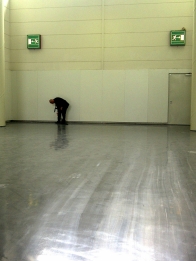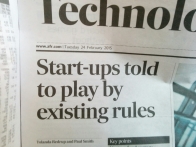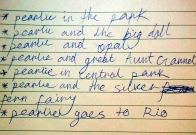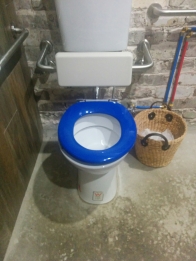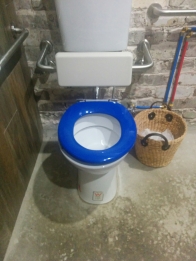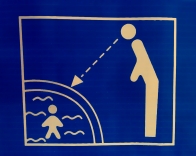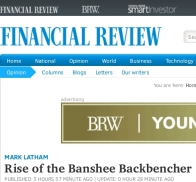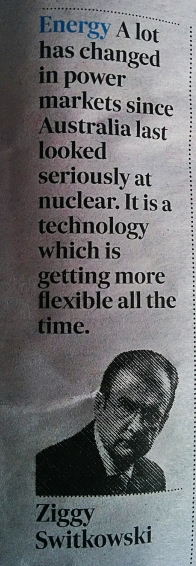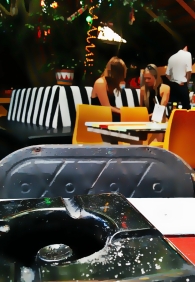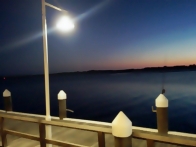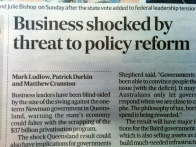Back to school education … I made a friend quite cross with regards to something negative I wrote with respect to private schooling.
She said, and I absolutely believe her, that all she wanted for her kids was that they have ‘the best start in life’, aka private schooling.
However, many people that send their kids to private schools with this mantra in mind seem take on an expense of say $40k per annum, per child, without first doing substantial research on the subject. The fact that other people they know are doing it is deemed enough evidence.
Being me, I have done a little research into two aspects of this mystery:
1. Why parents choose to send their kids to private schools, and also
2. The data showing the effectiveness of private schools in giving kids a ‘better start in life’
Summarizing the surprisingly little published data on the second of these:
Taking into account all relevant factors, between school types in Australia there is virtually no difference in outcomes for kids, when measuring factors such as likelihood of employment, earning levels and employment prestige, and normalising for other variables. For more details see:
http://theconversation.com/buyer-beware-are-you-really-purchasing-a-better-education-14509
http://theconversation.com/private-schooling-has-little-long-term-pay-off-30303
If you don’t have much maths in your background, this data shows that university entrance scores and post uni salaries primarily correlate with socio-economic factors. To put it another way, a kid from a well-off background will do well not matter what sort of school they go to; it’s the parents and their attitudes & beliefs that drive ‘good’ results. The fact that a lot of well-off kids happen to go to private schools simply creates a correlation between these schools and good results that is not at all causal. So when you look at the great results from some expensive school you aren’t looking at a reflection of great teaching; all you are doing is looking at a socio-economic catchment phenomenon. I have explained this to a few well educated people now and they rarely get it so I am beginning to wonder what all that education is for.
So the rush to private schools is not supported by empirical data. This is a marketer’s dream – a product that sells itself despite the fact that it has no obvious quantitative efficacy. No wonder there is very little data available.
I then decided to tool around the internet looking for qualitative studies that explored why parents send their kids to private schools. This is the complete list of factors found by researchers, cobbled together from a number of studies, in no particular order:
1. Higher university entrance marks (debunked)
2. Higher salaries for kids when they emerge from university (debunked)
3. More prestigious jobs for kids when they emerge from university (debunked)
So then we get to the ‘soft’ selling features of private schooling – the ones that are hard to measure and in reality must sell the deal to parents:
4. Keep the kids away from the riff-raff in public schools. I personally think that in public schools one is more likely to find a broader cross-section of peoples, and this must serve kids well in life as opposed to the sort of (Anglo-Chinese blended) mono-culture in some private schools. As to out-and-out riff-raff, in my experience the worst of the worst people that I have met in life were spoiled private school progeny.
5. Ensure that the kids are more well-rounded as individuals. As per the last point, a sense of entitlement and elitism that is hard to avoid at private schools might erode any efforts to make kids more well-rounded. But I would challenge that public school kids aren’t well rounded anyway – they are pretty amazing and often their well-roundedness seems less ‘coached’ than the private school kids.
6. Ensure that the kids have more ‘life’ experiences. I personally believe that over-stimulating kids with experiences may lead to boredom later in life. Too much, too early can suck out the motivation from a soul. It’s not a biggy anyway.
7. Better remedial services. There is a view out there that private schools deal better with kids that go off the rails or just can’t keep up. However there is no published data to suggest this is true.
8. Allow for more parental involvement in the schooling process. Yeah well this makes no sense. In the old days the wealthiest people paid schools a lot of money for them to take their kids right off their hands, for good. Now people want to hang around schools like helicopters. If this turns you on so much, then home-school your kids. I say leave school education to the professionals and also leave the professionals alone – you can only annoy them as a parent.
9. Ensure that the kids get networked into a higher social status environment. This is a value judgement which becomes self fulfilling prophecy of no value.
10. Allow the parents to increase or maintain their own social status. This is the true selling point as we all know, but few admit. For example, I know parents, mums in particular, who have essentially dropped all their old friends and completely disappeared into mother’s groups at a private school. It isn’t real; kids grow up and these coalitions of the similarly afflicted will have no purpose in six years time. Someone ought to do a psychological study of this very odd phenomenon. It reminds me of the Sneetches in action.
11. Ensure that the kids get more exposed to ‘traditional’ values. There is a fear by the conservative types that the unionised Labor leaning state school teachers may bugger around with their kid’s heads. This is why Johnny Howard was so keen to promote private schooling with policy tweaks and changes; to increase the number of future right leaning voters. Apart from politics, conservative types are also scared of the laissez faire social leanings their kids may pick up in a state school. Indeed this may be an unholy and subconscious attempt to ensure that children do not fall too far from the tree.
And there you have it. A pretty poor set of reasons to spend $40k per year per child, in my opinion. Where else would anyone sign up for a quarter of a million dollar obligation (per child) without substantial research results that compare the pro’s and con’s?
And the oddest thing is that many of these people can hardly afford this money; it can be a real stretch. Because of this they are even less open to discussions on the matter. It is such a leap of faith and it affects their lives substantially; therefore it hurts when their blind choice is questioned.
And what of the kids that are sent to private schools? Do they feel any obligation to succeed? I think so; in many cases their parents go way out of their way to afford the fees and they want value for money. No matter how hard they try not to put pressure on their kids, their very involvement in the process, the helicoptering, alerts the kids to their desires. At worst this will cause some kids to buckle. Even at best it may drive them in directions they wouldn’t have taken in their lives without the same pressure.
We have a wonderful state schooling system that is essentially paid for through your taxes. Use it. Make your life easier.
And, hey parent, leave your kids alone. Let them be themselves, in their own time, and without unnecessary pressure to perform to some dearly-held vision that you might hold for ‘success’ in this society of ours.
We do not own the ‘narrative’ of our children. That belongs to them and the world.























